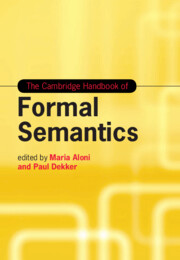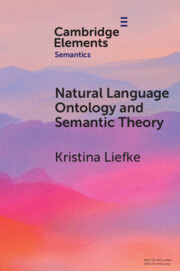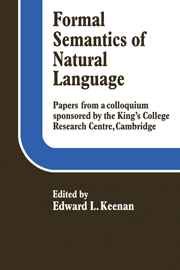The Cambridge Handbook of Formal Semantics
Formal semantics - the scientific study of meaning in natural language - is one of the most fundamental and long-established areas of linguistics. This Handbook offers a comprehensive, yet compact guide to the field, bringing together research from a wide range of world-leading experts. Chapters include coverage of the historical context and foundation of contemporary formal semantics, a survey of the variety of formal/logical approaches to linguistic meaning and an overview of the major areas of research within current semantic theory, broadly conceived. The Handbook also explores the interfaces between semantics and neighbouring disciplines, including research in cognition and computation. This work will be essential reading for students and researchers working in linguistics, philosophy, psychology and computer science.
- Provides the reader with a comprehensive and up-to-date picture of formal semantics as a field of research
- Designed to appeal to philosophers, psychologists and computer scientists, as well as linguists
- Chapters are written by leading researchers in the field
Reviews & endorsements
'After half a century of intensive research, formal semantics has become a mature discipline taught in most linguistics departments. The Amsterdam people were among the pioneers, and they offer us what is most needed today: a comprehensive handbook covering the entire field, each chapter of which is written by a world expert. A must read for anyone interested in language.' Francois Recanati, Institut Jean Nicod, Paris
Product details
June 2016Adobe eBook Reader
9781316553855
0 pages
0kg
15 b/w illus. 8 tables
This ISBN is for an eBook version which is distributed on our behalf by a third party.
Table of Contents
- Part I. The Landscape of Formal Semantics:
- 1. Formal semantics Barbara H. Partee
- 2. Lexical semantics James Pustejovsky
- 3. Sentential semantics Peter Pagin
- 4. Discourse semantics Nicholas Asher
- 5. Semantics of dialogue Jonathan Ginzburg
- Part II. Theory of Reference and Quantification:
- 6. Reference Paul J. E. Dekker and Thomas Ede Zimmermann
- 7. Generalized quantifiers Dag Westerståhl
- 8. Indefinites Adrian Brasoveanu and Donka F. Farkas
- 9. Plurality Rick Nouwen
- 10. Genericity Ariel Cohen
- Part III. Temporal and Aspectual Ontology and Other Semantic Structures:
- 11. Tense Atle Grønn and Arnim von Stechow
- 12. Aspect Susan Rothstein
- 13. Mereology Lucas Champollion and Manfred Krifka
- 14. Vagueness Hans Kamp and Galit W. Sassoon
- 15. Modification Louise McNally
- Part IV. Intensionality and Force:
- 16. Negation Henriëtte de Swart
- 17. Conditionals Paul Egré and Mikaël Cozic
- 18. Modality Lisa Matthewson
- 19. Questions Paul Dekker, Maria Aloni and Jeroen Groenendijk
- 20. Imperatives Paul Portner
- Part V. The Interfaces:
- 21. The syntax-semantics interface Manfred Sailer
- 22. The semantics-pragmatics interface Philippe Schlenker
- 23. Information structure Enric Vallduví
- 24. Semantics and cognition Giosuè Baggio, Keith Stenning and Michiel van Lambalgen
- 25. Semantics and computation Matthew Stone.





